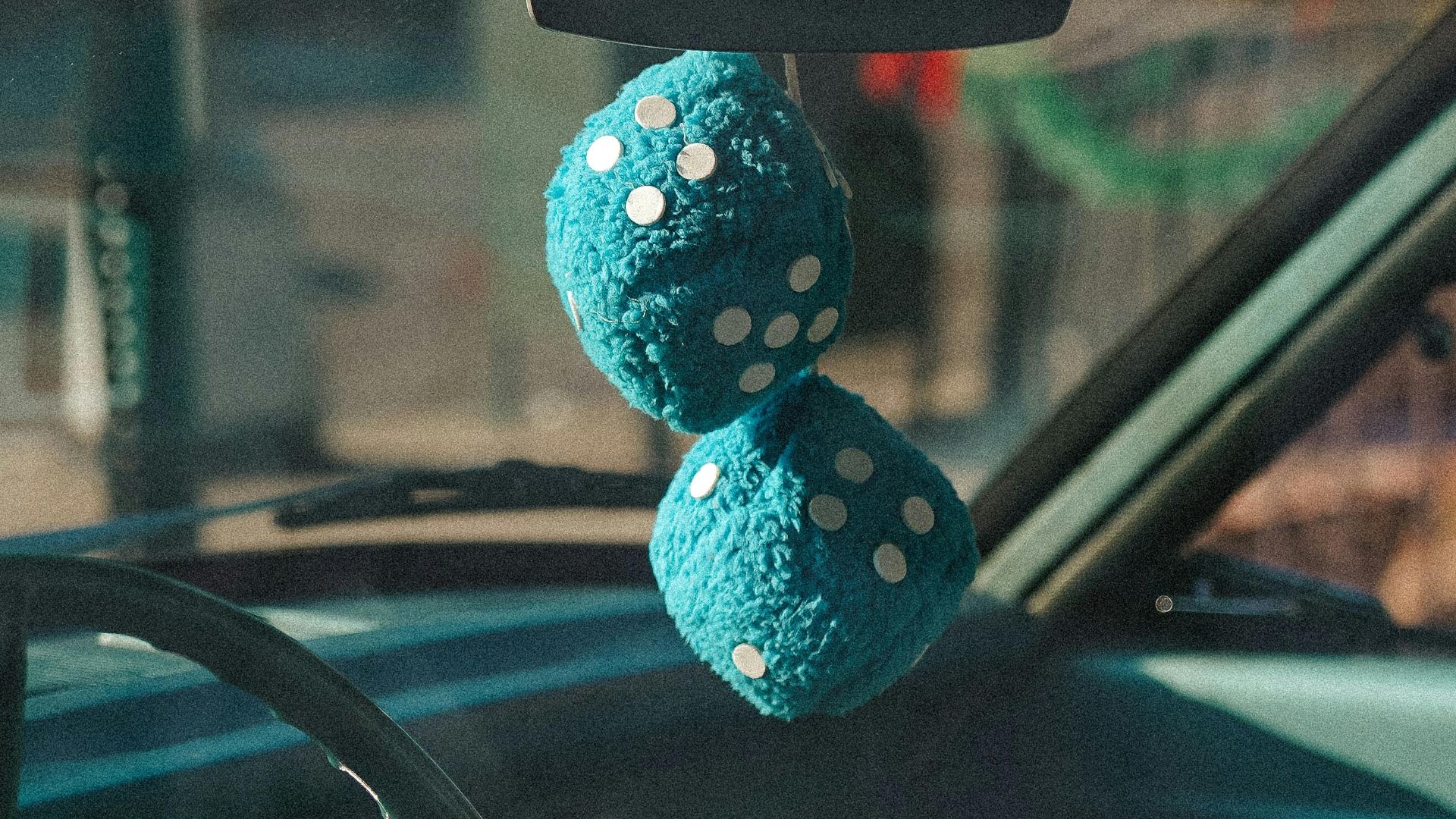WWII Pilots Started The Fuzzy Dice Trend—Here's Why It's Still Popular 80 Years Later
WWII Pilots Started The Fuzzy Dice Trend—Here's Why It's Still Popular 80 Years Later
Normally, you aren't gambling with your life when you drive. That is unless you ignore the speed limit or live somewhere with a lot of potholes. However, even the safest of drives will sometimes sport a pair of fuzzy dice hanging from their rearview mirror.
Today, fuzzy dice are used to add some vintage flair or personality to a vehicle, with many people not questioning what these dice represent or where they came from. Far from just being a plush decoration or a traffic obstruction (depending on who you ask) fuzzy dice have a long and fascinating history. Our story begins in one of the most turbulent times in modern history: World War II.
Lucky Number Seven
The first pairs of dice used as decoration weren't fuzzy—and they weren't used in cars either. The origins of decorative dice trace back to American fighter pilots. Prior to going out on dangerous sortie missions, pilots would affix a pair of dice to their instrument panels.
The dice would display seven pips (dots) for luck. And, with an average lifespan that could be measured in weeks, these flying aces needed all the help they could get! Pilots were also overwhelmingly young, many being barely out of their teens; they must have thought themselves invincible.
However, there was also a darker undercurrent to this decoration. While planes were far safer than they were in the previous war, any time a pilot went up in the air they were literally playing dice with their lives. 15,000 pilots lost their lives during training alone.
When the war was over, pilots who survived brought their lucky dice home and gave them a new place of honor. Following the horrors of war and economic depression, young people had more economic and social freedom than ever before. Many of the pilots who'd cheated the grim reaper above the Atlantic took their wartime earnings and funneled them into a new mode of transportation: cars.
Gambling With Their Lives
It's impossible to survive war unchanged and many of the pilots who came home could not let go of their need for speed. This restlessness led to reckless driving in the form of street racing and drag racing. Veterans found another way to get their blood pumping.
Additionally, many pilots were largely responsible for the maintenance of their planes. This mechanical know-how led itself nicely to hot rod culture. Vehicles were customized for speed as well as style.
There was just one problem with airmen's lucky dice. The hot summer sun refracted through the windshield and melted plastic good luck charms. Undeterred, hot rod drivers switched to fuzzy plush dice and manufacturers followed suit.
Before long, fuzzy dice were as much of a symbol of post-war youthful rebellion as James Dean's red windbreaker and Marlon Brando's tight t-shirts. Although, perhaps Dean's infamous "Little Bastard" Porsche Spyder would be a better point of comparison. These drivers were gambling with their lives, after all.
Not everyone was on board with the fuzzy dice trend. Laws were passed prohibiting windshield obstructions of any sort—including fuzzy dice, religious symbols, and air fresheners—to keep traffic safe. Cops also used windshield obstructions as a pretense to pull over and racially profile drivers.
Today, the fuzzy dice trend is disconnected from its original roots—and maybe that's a good thing! Studies show that drivers who hang fuzzy dice are no more likely to drive dangerously than those that don't. However, fuzzy dice and other windshield obstructions are still banned in California, Minnesota, New Hampshire, New Jersey, and Pennsylvania.









